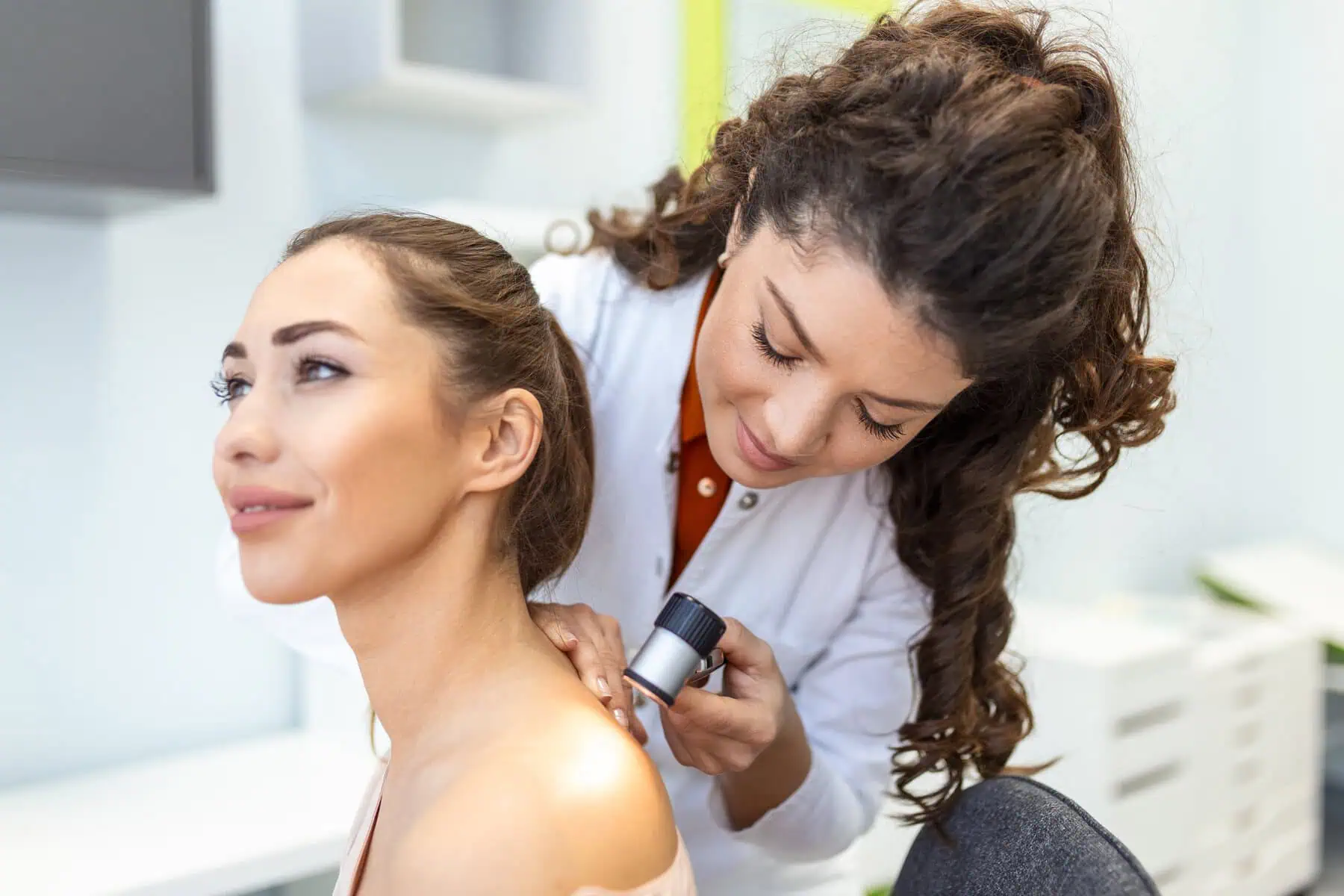Skin Screenings in New York, NY

Skin Screenings in New York, NY
Skin screenings are essential preventive measures for detecting skin cancer and other skin-related conditions at an early stage. The procedure involves thoroughly examining the skin by a qualified healthcare provider, who checks for abnormal moles, growths, or lesions. Skin screenings are crucial, especially for individuals over the age of 40, as the risk of skin cancer increases with age. The screening process helps identify any early signs of skin cancer, such as melanoma, basal cell carcinoma, and squamous cell carcinoma, which can significantly improve the chances of successful treatment if detected early.
What Causes the Need for Skin Screenings?
Skin screenings are necessary due to various factors that increase the risk of skin cancer. Prolonged exposure to ultraviolet (UV) radiation from the sun or tanning beds is a primary cause of skin damage that can lead to skin cancer. Other risk factors include a family history of skin cancer, fair skin, sunburns, many moles or atypical moles, and a weakened immune system. Regular skin screenings are advised for individuals who fall into these high-risk categories to ensure early detection and timely intervention.
What Are the Different Procedures Involved in Skin Screenings?
Skin screenings involve several steps, each aimed at thoroughly examining the skin for any signs of abnormality. The procedures include:
Visual Examination
A healthcare provider visually examines the skin from head to toe during a skin screening. This includes areas that are not frequently exposed to sunlight, such as the scalp, soles of the feet, and between the toes. The provider looks for any unusual moles, growths, or patches that may indicate a risk of skin cancer.
Dermatoscopy
A dermatoscope is a handheld device that allows the provider to examine moles and lesions more closely. This device magnifies the skin, providing a detailed view that helps identify patterns and structures that are not visible to the naked eye. Dermatoscopy is particularly useful in distinguishing between benign and malignant lesions.
Photographic Documentation
In some cases, photographs of the skin are taken to monitor any changes over time. This is especially important for individuals with many moles or atypical moles. By comparing pictures taken during different screening sessions, healthcare providers can detect any changes that may suggest the development of skin cancer.
Biopsy
If the provider finds a suspicious mole or lesion during the screening, a biopsy may be performed. In this procedure, a small sample of skin tissue is taken, which is then analyzed in a laboratory to determine whether it is cancerous. A biopsy is the most definitive way to diagnose skin cancer.
What Are the Results of Skin Screenings?
The results of skin screenings can vary depending on the findings. If no abnormal moles or lesions are found, the screening is considered explicit, and no further action is required until the next scheduled screening. However, if any suspicious areas are identified, the healthcare provider will discuss the findings and recommend additional testing or treatment, such as a biopsy or removal of the lesion. Early detection of skin abnormalities through screenings can lead to prompt treatment, critical in preventing skin cancer progression and improving the overall prognosis.
Benefits of Skin Screenings include
- Early detection of skin cancer
- Increased chances of successful treatment
- Identification of non-cancerous skin conditions
- Monitoring of atypical moles
- Prevention of skin cancer progression
- Personalized advice on sun protection
- Awareness of skin health
- Peace of mind through regular check-ups
- Access to professional medical care
- Ongoing monitoring of skin changes
Frequently Asked Questions
It is recommended that skin screenings be performed annually, particularly for individuals at higher risk of skin cancer. However, your healthcare provider may recommend more regular screenings based on your individual risk factors.
During a skin screening, your healthcare provider examines all areas of your skin, including areas not usually exposed to the sun. They may use a dermatoscope to examine moles and lesions more closely, and photographs may be taken for future comparison.
Skin screenings effectively detect different types of cancer, including melanoma, basal cell carcinoma, and squamous cell carcinoma. Early detection during screenings can significantly improve treatment outcomes.
A biopsy is only required if the healthcare provider finds a suspicious lesion or mole that needs further investigation. It is a standard procedure to confirm whether the tissue is cancerous.
Before your screening, it is helpful to remove nail polish and avoid makeup or heavy lotions. If you have any concerns or have noticed new or changing moles, mention them to your provider during the screening.
Many health insurance plans cover skin screenings, especially for those at higher risk of skin cancer. You should speak with your insurance provider to find out what coverage you have and any associated costs.
Regular skin screenings are vital to maintaining overall health, especially as you age. Early detection through these screenings can save lives by catching skin cancer before it advances. Book an appointment at Park Plaza in New York, NY, today to proactively protect your skin health.
